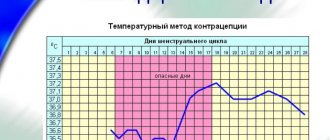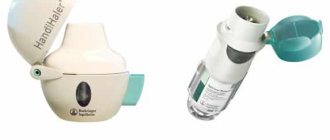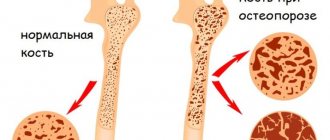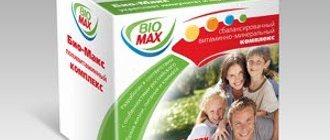Chemical properties
Ipratropium Bromide is a quaternary derivative of atropine , which contains an isopropyl radical at the tropane heterocycle. The substance is poorly soluble in fats. Anticholinergic drug. Molecular weight = 332.5 grams per mole.
In the Russian Federation, the medicine is included in the list of essential and vital drugs. Available in the form of an aerosol for inhalation, solution or capsules with powder for inhalation, coated tablets and solution for injection.
Ipratropium bromide – application
In the absence of contraindications, the doctor may prescribe the substance ipratropium bromide; the dosage and frequency of administration depends on the pathology and condition of the patient. The dosage form depends on the disease and the chosen treatment regimen.
The drug can be used in different ways depending on the form of release:
- Inhalations.
A metered aerosol, solution or powder is used. - Intranasally.
Use ipratropium bromide nasal drops. - Inside
(tablets, dragees). - Injection administration
(intravenously and intramuscularly).
Ipratropium bromide – solution for inhalation
Ipratropium bromide is sold for inhalation by prescription. The medicine is prescribed to patients over 6 years of age for the prevention and treatment of respiratory tract pathologies (asthma, bronchitis).
Dosages:
- For preventive purposes, 2-3 doses three times a day (every 6-8 hours).
- As a treatment: 3 doses 3-5 times a day.
- Children 6 to 12 years: 1-2 doses as needed (up to 4 times daily).
Ipratropium bromide – nasal spray
Ipratropium bromide can be instilled into the nose when using the substance in the form of a nasal spray or as part of a combination preparation. In this case, it is not recommended to use the drugs for children under 12 years of age.
The frequency and dose vary depending on the drugs, but are united by general rules:
- for moderate and mild forms of the disease, take 2-3 doses three times a day, which equals 0.4-0.6 mg of the substance;
- in acute and severe forms, additional injections are allowed - up to 2-3 doses in addition to those indicated.
Ipratropium bromide tablets
If it is prohibited to use the substance in the form of inhalations, tablets of ipratropium bromide are used, the doses of which are comparable to other forms of the drug.
Recommendations:
- Tablets are prescribed after intravenous administration of ipratropium bromide, 4-6 hours after injection.
- Initial dose of the drug: 5-15 mg, then increases.
- Frequency of subsequent doses: 2-3 times a day, 10-15 mg.
Pharmacodynamics and pharmacokinetics
The substance acts on m-cholinergic receptors located in the smooth muscles of the tracheobronchial tree. Acts as a competitive antagonist of acetylcholine . The product practically does not diffuse through biological membranes. After taking the drug, reflex bronchoconstriction decreases and the intensity of secretion of the glands located on the mucous membrane of the bronchi and nose decreases. The drug prevents the narrowing of the bronchi due to inhalation of cigarette smoke or cold air, eliminates bronchospasm, and neutralizes the effect of various bronchospasms.
The effect of the drug appears within 5-15 minutes after inhalation administration, reaching its maximum level within 60-120 minutes, lasting up to 8 hours. Under the influence of the substance, the heart rate increases and AV conduction . Mainly the medium and large bronchi expand.
Ipratropium Bromide has a low degree of systemic absorption. The medicine is excreted through the intestines, a quarter - unchanged, the rest - in the form of metabolites. The substance is not absorbed in the digestive tract and is excreted in the feces. Metabolism takes place in the liver. Does not have the ability to accumulate in the body. When taken orally, the drug has low bioavailability; after intramuscular administration, up to 90% of the drug is absorbed.
Pharmacological properties of the drug Tiotropium bromide
Anticholinergic, bronchodilator . As a result of inhibition of M3 receptors in the respiratory tract, bronchial smooth muscles relax. High affinity for receptors and slow dissociation from M3 receptors determine a pronounced and long-lasting bronchodilator effect when applied topically in patients with COPD. When administered by inhalation, the absolute bioavailability of tiotropium bromide is 19.5%. Due to its chemical structure (quaternary ammonium compound), tiotropium bromide is poorly absorbed from the gastrointestinal tract. For the same reason, food intake does not affect the absorption of tiotropium bromide. The maximum concentration in the blood serum after inhalation of the powder at a dose of 18 mcg is achieved after 5 minutes and is 17–19 pg/ml in patients with COPD, the equilibrium concentration in the blood plasma is 3–4 pg/ml. Plasma protein binding is 72%, volume of distribution is 32 l/kg. Does not penetrate the BBB. Biotransformation is insignificant, which is confirmed by the fact that after intravenous administration of the drug to young healthy volunteers, 74% of unchanged tiotropium is found in the urine. Tiotropium is broken down non-enzymatically to the alcohol N-methylscopine and dithienylglycolic acid, which do not bind to muscarinic receptors. Even at ultra-high doses, tiotropium does not inhibit cytochrome P450, 1A1, 1A2, 2B6, 2C9, 2C19, 2D6, 2E1 or 3A in human liver microsomes. After inhalation, the terminal half-life is 5–6 days, excreted by the kidneys (14% of the dose), the rest, not absorbed in the intestine, is excreted in feces. The bronchodilator effect is a consequence of local rather than systemic action, depends on the dose and lasts for at least 24 hours. The use of tiotropium significantly improves pulmonary function 30 minutes after a single inhalation for 24 hours. An equilibrium state was achieved during the first week, and a pronounced bronchodilator the effect was observed on the 3rd day. Evaluation of the bronchodilator effect over the course of a year did not reveal any manifestation of tolerance. Reduces the number of exacerbations of COPD, increases the period until the first exacerbation compared with placebo, improves quality of life throughout the treatment period, reduces the number of hospitalizations associated with exacerbation of COPD and increases the time until the first hospitalization.
Indications for use
The substance is prescribed in the form of inhalations for the treatment and prevention of:
- chronic bronchitis with or without emphysema
- bronchial asthma of moderate and mild severity;
- bronchospasm during surgery.
Inhalation of Ipratropium Bromide is used to prepare the respiratory tract before the administration of antibiotics , corticosteroids, mucolytic drugs and sodium cromoglycate .
Intranasally, the substance is prescribed for the treatment of chronic runny nose with copious mucus secretion.
The medicine is used orally and intravenously:
- with sinus bradycardia associated with the action of the vagus nerve;
- for the treatment of bradyarrhythmia with sinoatrial block;
- with second degree AV block
- in patients with atrial fibrillation (bradysystolic form).
Ipratropium bromide - what is it?
Studying the composition of medications, patients wonder what ipratropium bromide is. The substance is the main component of medications used to relieve broncho-obstructive syndrome. Refers to organic compounds - amines - ammonia derivatives, semi-synthetic blockers of M-cholinergic receptors (all subtypes). The substance acts like the plant alkaloid atropine, causing suppression of gland secretion, dilation of bronchioles, and tachycardia. Its activity is higher, and the effect on the central nervous system is practically absent.
Ipratropium bromide – mechanism of action
For the treatment and prevention of respiratory tract diseases (chronic obstructive diseases), the substance ipratropium bromide is used, its action is selective and directed to the bronchi. When M-cholinergic receptors are blocked, the negative effect of the nervous system, which contracts the bronchi, stops. At the same time, ipratropium bromide does not affect the upward flow of mucus, so stagnation of sputum does not form. The substance tiotropium bromide has similar properties.
Ipratropium bromide – release form
On the modern pharmacological market, synthetic m-choline blockers ipratropium and tiotropium bromide are presented in the form of dosed solutions for inhalation and aerosols. With this method, there is practically no resistive effect (which occurs after absorption into the blood). As a rule, preparations containing ipratropium bromide are indicated for inhalation use, since ipratropium bromide is characterized by low absorption from the mucous membrane of the respiratory tract. The substance is excreted through the gastrointestinal tract.
Ipratropium bromide – trade name
The modern drug ipratropium bromide (m-anticholinergic group) can be found in pharmacies under different trade names. All drugs, in addition to the main substance, may contain additional components.
Known medicines:
- Atrovent and Atrovent N, substance content: 250 mcg in 1 inhalation solution and 20 mcg in 1 aerosol dose;
- Ipratropium Steri-Neb (250 mcg in 1 ml);
- Ipratropium native (250 mcg in 1 ml);
- Ipratropium-aeronative containing 20 mcg of the substance per dose (aerosol).
Multicomponent preparations also contain ipratropium bromide:
- Berodual (500 mcg + 250 mcg per ml);
- Inspirax (20 mcg+50 mcg/ml in aerosol, dosed and 0.5 mg+0.25 mg/ml in solution);
- Fenipra (20 mcg+50 mcg/dose);
- Xymelin Extra, nasal spray (500 mcg+600 mcg/1 ml);
- Otrivin Complex, spray (500 mcg+600 mcg/1 ml).
Side effects
Ipratropium Bromide may cause:
- dry mouth and increased viscosity of sputum after inhalation;
- dilation of the pupil, increase in intraocular pressure with angle-closure glaucoma ;
- allergic manifestations , dry mouth;
- irritation and dryness in the nose when used intranasally;
- constipation, anuria , anorexia , decreased activity of sweat glands;
- cough, nausea, headaches , tachycardia , swelling due to allergies;
- rarely – extrasystolia , pain in the eyes.
Interaction
Combination with xanthine and beta-agonists can lead to an increased bronchodilator effect.
Simultaneous use of the drug with anticholinergic drugs enhances the effect of their use.
Antiparkinsonian drugs, tricyclic antidepressants , quinidine enhance the effect of taking the drug. facilities.
salbutamol with caution due to the risk of increased intraocular pressure and the development of glaucoma .
Ipratropium bromide – contraindications
The substance has a list of contraindications: diseases and conditions in which the use of medications containing ipratropium bromide (spray or inhalation solutions) is recommended to be prohibited or postponed until better times. The drug is prohibited:
- for allergy sufferers;
- children under 6 years old;
- pregnant women (especially in the first trimester).
The list of relative contraindications includes many conditions and pathologies. Use the substance with caution when:
- increased intraocular pressure, angle-closure glaucoma;
- diseases of the cardiovascular system (arrhythmias, tachycardia, mitral stenosis);
- chronic lung diseases, especially in children;
- prostate adenoma;
- mechanical stenosis of the digestive tract, intestinal obstruction;
- nonspecific ulcerative colitis;
- liver and kidney failure and other pathologies.
special instructions
The drug is not recommended for use to relieve attacks of bronchial asthma . Beta-agonists are better suited for this purpose .
In patients with cystic fibrosis , when treated with this drug (oral administration), the risk of developing adverse reactions from the digestive system increases.
If the medication is ineffective or the patient’s condition worsens, it is recommended to consult a doctor to change the treatment regimen.
Caution is recommended when driving or performing other hazardous activities.
Indications
Drugs containing the substance in question are used for maintenance treatment of patients with the following diseases:
- chronic obstructive pulmonary disease;
- emphysema;
- bronchial asthma;
- Chronical bronchitis;
A good therapeutic effect is achieved by using tiotropium bromide to relieve shortness of breath. The substance is also used to improve the quality of life impaired by COPD patients. For the same purpose, tiotropium bromide is used for bronchial asthma in patients over six years of age. After treatment, there is a decrease in the risk of exacerbations.
Drugs containing (Ipratropium Bromide analogues)
Level 4 ATX code matches:
Vazonat
Phosphaden
Hawthorn fruit
Preductal
Meldonium
Angiosil Retard
Ranexa
Lily of the valley tincture
Neocardil
Rimecore
Triductane
ATF-Long
Hawthorn tincture
Triductan MV
Trimectal MV
Trimectal
Neoton
Predisin
Trimetazidine
Tivortin Aspartate
Analogs: Atrovent , Ipratropium Steri-Neb , Ipratropium-native , Atrovent N , Ipravent .
The combination of Ipratropium Bromide + fenoterol is included in the following drugs: Ipraterol-native , Fenipra , Berodual , Ipraterol-aeronativ , Berodual N.
In combination with salbutamol, the substance is found in the drug Combivent and Ipramol Steri-Neb .
Ipratropium bromide + xylometazoline are the active ingredients of the drugs Otrivin Complex and Xymelin Extra .
Possibilities of a combination of ipratropium bromide and xylometazoline in the treatment of patients with rhinitis
The nonspecific protective barrier of the nasal mucosa and paranasal sinuses is provided by the mucociliary transport system, various antimicrobial factors produced by mucosal cells (lysozyme, lactoferrin, interferon, sialic acids, etc.), mast cells and the phagocytic system represented by mononuclear cells and polymorphonuclear leukocytes [1]. In response to the influence of any aggressive factors - infectious agents, allergens, pollutants, a local reaction develops, which can become the beginning of acute and, under unfavorable circumstances, chronic inflammatory diseases of the nose and respiratory tract as a whole. The inflammatory process in the nasal cavity - rhinitis not only significantly worsens the patient’s quality of life and negatively affects the functional state of almost all organs and systems of his body, but can also cause the development of diseases such as bacterial rhinosinusitis, otitis media, tonsillopharyngitis, inflammation of the lower parts of the respiratory system etc. According to the International Consensus (1993), rhinitis is a disease of the nasal mucosa, accompanied daily for an hour or more by at least two of the following symptoms: nasal congestion, nasal discharge, sneezing and tickling in the nose [5 ]. Unfortunately, there is still no generally accepted classification of inflammatory diseases of the nose [2, 4, 6]. In clinical practice, acute and chronic rhinitis are distinguished. Treatment of chronic rhinitis is usually long-term, complex, and in some cases using surgical methods. Acute rhinitis can be non-allergic (in the vast majority infectious), not a hypersensitivity reaction and developing without the participation of immunological mechanisms, and allergic. The often-found statement that there is no need to treat an acute runny nose - it will go away on its own in a week is without any basis. The lack of adequate treatment leads not only to a protracted course of the disease, a deterioration in the quality of life, but also to an increased risk of complications and chronicity of the process. One of the main drugs used for acute rhinitis are vasoconstrictors (decongestants). The pharmacological mechanism of action of decongestants is based on an increase in the tone of the blood vessels of the nasal cavity, leading to a decrease in their lumen and blood supply. Topical drugs have undoubted advantages, the advantages of which are simplicity and accessibility of administration directly to the nasal mucosa, high concentration of the drug with a small total dose of the drug, and the absence of systemic action. Systemic side effects of intranasal vasoconstrictors when used in recommended doses have not been confirmed by clinical and scientific data; most likely, many of them are caused by difficulty in nasal breathing and the formation of a number of pathological conditions in internal organs and systems against this background [3]. Vasoconstrictor drugs not only eliminate a number of symptoms of rhinitis, but also affect the pathogenesis of the disease - a decrease in edema leads to a more rapid restoration of microcirculation in the area of inflammation and restores the patency of natural anastomosis. Decongestants are used not only for acute rhinitis, but also in the treatment of otitis media and rhinosinusitis, for wider distribution of other intranasal agents in the nasal cavity, when examining patients with various rhinological diseases - to improve the overview of the structures of the nasal cavity and when conducting a number of functional studies in the cavity nose, to prevent the development of pathology of the ear and paranasal sinuses during sudden changes in external pressure. Almost all nasal decongestants are adrenergic agonists and differ in their affinity for certain types of adrenergic receptors and the duration of the effect. α1- and α2-adrenergic receptors are common in the mucous membrane of the nasal cavity; respectively, α1- and α2-adrenergic agonists are used for the purpose of vasoconstriction. Stimulation of α1-adrenergic receptors leads to constriction of venous and, to a lesser extent, arterial vessels, therefore α1-adrenergic agonists are characterized by a moderate vasoconstrictor effect. Until recently, phenylephrine was a representative of α1-adrenergic agonists. However, more recently, Prof. A.Yu. Ovchinnikov revealed that oxymetazoline also has affinity for α1-adrenergic receptors [16]. The effect on α2-adrenergic receptors, the irritation of which leads to a narrowing of mainly arterial vessels, provides a more pronounced and long-lasting vasoconstrictor effect, incl. and due to the long-term preservation of drugs in the nasal cavity as a result of the resulting decrease in blood flow in the mucous membrane. Oxymetazoline, indanazolamine, xylometazoline, naphazoline are α2-adrenergic agonists. Long-acting nasal vasoconstrictors have low bioavailability because... only a small part of the solution introduced into the nasal cavity is absorbed from the mucous membrane [7, 12]. Decongestants are not recommended for use for more than 10 days; their main disadvantages are a decrease in effectiveness with long-term use, the formation of drug-induced rhinitis and a rebound increase in nasal congestion upon withdrawal. Local side effects in most cases develop with uncontrolled use of decongestants and non-compliance with recommendations for their use and are mainly represented by irritation and dryness of the nasal mucosa. While providing a marked improvement in nasal breathing, decongestants have virtually no effect on other manifestations of rhinitis, incl. and on the level of nasal secretion [13]. The symptom of rhinorrhea accompanies almost all acute and a number of chronic rhinitis. An increase in the level of nasal secretion in the first stage occurs as a result of sweating of fluid from the blood vessels. Subsequently, the amount of mucus increases due to an increase in the number of goblet cells and mucous glands and an increase in their secretory activity due to the influence of inflammatory neurotransmitters (infectious and non-infectious) and parasympathetic stimulation. An increase in the amount of nasal secretion is aimed at compensating for impaired mucociliary transport, this is an attempt to replace the work of a dead ciliated cell. However, the discharge in the nasal cavity contains a number of substances that irritate the mucous membrane (sodium chloride, ammonia), the concentration of which is especially high in the first days of the development of the pathological process, so this symptom in many cases requires drug control as early as possible in the disease. Over the past 40 years, not a single new decongestant has appeared in the arsenal of doctors; mainly new forms of drugs, as well as their combinations, are used. The development of such drugs is aimed at increasing the effectiveness of the impact on the symptoms of a runny nose, in addition to difficulty in nasal breathing, and reducing unwanted local side effects. Such a drug is Xymelin Extra (pharmaceutical), the first nasal spray with a unique dual action, which, in addition to the vasoconstrictor (xylometazoline), includes ipratropium bromide, which reduces nasal secretion. Xylometazoline is an α2-adrenergic agonist that causes an adrenergic effect. The drug relieves nasal congestion by narrowing the blood vessels of the mucous membrane and reducing the resistance of the nasal cavity. When using xylometazoline, the patient notes a subjective feeling of improved air passage through the nose, increased drainage of the paranasal sinuses and middle ear structures [9, 10, 14, 15]. Ipratropium bromide is an anticholinergic drug with local parasympathetic blocking activity. The effect of ipratropium bromide is manifested by complete inhibition of the cholinergic receptors of the glands of the nasal mucosa, which causes a decrease in the amount of nasal secretion [8]. Xymelin Extra is available in the form of a dosed spray with a pump, which, compared to drops, allows you to accurately dose the drug and evenly irrigate the nasal mucosa. The drug is approved for use from 18 years of age. Soon after using Ximelin Extra, nasal breathing is restored and nasal discharge stops. The effect of the drug begins within 5–10 minutes, the absence of rhinorrhea lasts for 6–8 hours, and the vasoconstrictor effect continues, like the effect of conventional Xymelin, for up to 12 hours. Efficacy and safety of the drug combination of an α2-adrenergic agonist anticholinergic drug for topical use for rhinitis compared with the same results, ipratropium bromide and xylometazoline alone were demonstrated in a multicenter, double-blind, randomized, placebo-controlled, parallel group study [11]. The study involved 786 patients with acute rhinitis, with an average age of 30 years. 5 homogeneous groups of patients were formed who received a nasal spray containing, respectively: xylometazoline 1.0 mg/ml + ipratropium bromide 0.6 mg/ml; xylometazoline 0.5 mg/ml + ipratropium bromide 0.6 mg/ml; xylometazoline 1.0 mg/ml; ipratropium bromide 0.6 mg/ml; placebo. All medications were used 1 injection (about 140 μl) into each half of the nose 3 times a day. within 7 days. Evaluation of treatment results was carried out during the first day and after 7 days. The results of the study showed that after 24 hours from the start of treatment, all patients receiving xylometazoline, either alone or in combination with ipratropium bromide, had freer nasal breathing compared to nasal breathing in patients using ipratropium bromide alone and placebo. At the same time, patients receiving ipratropium bromide, either alone or in combination with xylometazoline, noted a more pronounced reduction in rhinorrhea compared to patients receiving xylometazoline and placebo. Regarding nasal obstruction during the first day of treatment, the combination drug with a lower dose of xylometazoline (0.5 mg/ml) was no less effective than the combination containing xylometazoline in an amount of 1.0 mg/ml. However, after 7 days. this superiority was maintained only in the group of patients using a combination of ipratropium bromide with a higher dose of xylometazoline [11]. Severity of rhinorrhea and nasal obstruction after 1 day. after the start of the study is presented in Figures 1, 2. No serious adverse events were observed in this study. A total of adverse events were observed in 285 patients and were distributed evenly in all study groups, with the exception of epistaxis, irritation and dryness of the nasal mucosa, which predominated in patients using ipratropium bromide. The incidence of bloody nasal discharge and epistaxis in the ipratropium bromide/xylometazoline (1.0 and 0.5 mg/ml), ipratropium bromide, xylometazoline and placebo groups was 26, 21, 14, 10 and 6%, respectively. Not a single patient sought medical help for this adverse event [11]. However, taking into account the results of the study, with the use of Xymelin Extra, nosebleeds of varying intensity may occur due to dry mucous membranes. It is possible to reduce the risk of such adverse events by using irrigation of the nasal mucosa with isotonic solutions, as well as monitoring the condition of the nasal cavity, observing the optimal timing of treatment and limiting the use of the drug against the background of atrophic processes in the nasal cavity. The method of using the drug is also of considerable importance - it is necessary to avoid contact of the drug stream with the nasal septum, the mucous membrane of which is quite thin and has a vascular network in the area of the locus Kisselbachii. For this purpose, the spray tip should be directed slightly lateral to the midline. There is no reason to assume the presence of other causes of nosebleeds caused by the use of Xymelin Extra. These results indicate that the combination of xylometazoline and ipratropium bromide provides adequate simultaneous relief of nasal obstruction and rhinorrhea associated with acute rhinitis. Patient ratings of the effectiveness of this combination were significantly higher than those for xylometazoline and ipratropium bromide used separately and placebo. Xymelin Extra is recommended for use in adult patients with both acute (cold) runny nose and acute diseases of the paranasal sinuses, and allergic rhinitis. As is known, the most effective means for influencing all the symptoms of allergic rhinitis are antihistamines and intranasal glucocorticosteroids, but the effect of the latter becomes significant only after 10–14 days. from the start of use. In this case, when the first symptoms appear, it is optimal to use Xymelin Extra nasal spray. Anticholinergic drugs (ipratropium) for severe rhinorrhea and decongestants for nasal obstruction are recommended for use in a short course (up to 10–14 days) by ARIA (working group for the study of allergic rhinitis, formed under the auspices of WHO). The goals of ARIA are to develop and approve evidence-based guidelines for the treatment of AR. It is traditionally believed that long-term (over 14 days) use of topical vasoconstrictor drugs causes severe swelling in the nasal cavity, nasal hyperreactivity, changes in the histological structure (remodeling) of the mucous membrane, i.e. development of drug-induced rhinitis. However, this opinion is not unambiguous and is not always confirmed by the results of experimental and clinical studies. When using topical decongestants for the recommended time, no development of pathological changes in the nasal mucosa is observed. If longer courses are used, tachyphylaxis and drug-induced rhinitis may develop. There is no data on possible tachyphylaxis and changes in the nasal mucosa during long-term intranasal use of ipratropium bromide, as well as clinical experience with its long-term use. New forms of decongestants, combinations of drugs, and their dosed use will help neutralize local side effects and increase the effectiveness of topical effects on nasal congestion and rhinorrhea. Thus, Ximelin Extra is a unique nasal spray, which includes vasoconstrictor and anticholinergic components. This is the only drug registered in Russia that is able to control the symptom of rhinorrhea and improve the quality of life of patients suffering from rhinitis and profuse nasal discharge. The drug is available to patients in over-the-counter form. Considering the unique composition of the drug Xymelin Extra, as well as the above data from clinical studies, it should be expected that it will take its rightful place in the domestic pharmaceutical market among intranasal drugs for the treatment of various forms of rhinitis.
Literature 1. Bykova V.P. The mucous membrane of the nose and paranasal sinuses as an immune barrier of the upper respiratory tract // Russian Rhinology. 1993. No. 1. P. 42–44. 2. Lantsov A.A., Ryazantsev S.V. On the issue of classification of rhinitis // Russian Rhinology. 1997. No. 2. P. 9–10. 3. Lopatin A.S. Vasoconstrictor drugs: mechanism of action, clinical use and side effects // Russian Rhinology. 2007. No. 1. P. 43–49. 4. Ovchinnikov Yu.M. On the classification of rhinitis in the light of the International Consensus for the diagnosis and treatment of rhinitis // Russian Rhinology. 1997. No. 2. P. 12. 5. Report on the International Consensus on the Diagnosis and Treatment of Rhinitis // Russian Rhinology. 1996. No. 4. P. 7–47. 6. Piskunov S.Z., Piskunov G.Z. On the issue of classification of rhinitis // Russian Rhinology. 1997. No. 2. pp. 12–13. 7. Andersson KE, Bende M. Adrenoreceptors in the control of human nasal mucosal blood flow // Ann. Otol. Rhinol. Laryngol. 1984. Vol. 93. P. 179–182. 8. Borum P., Gronborg H., Brofeldt S., Mygind N. Nasal reactivity in rhinitis // Eur J Respir Dis. 1983. Vol. 64. R. 65–71. 9. Clarke RW, Cook JA, Jones AS The effect of nasal mucosal vasoconstriction on nasal air-flow sensation // Clin Otolaryngol. 1995. Vol. 20. R. 72–73. 10. Gentile DA, Friday G., Skoner DP Management of rhinitis: antihistamines and decongestants // Immunol Allergy Clin North Am. 2002. Vol. 20. R. 355–368. 11. Eccles R., Pedersen A., Regberg D. et al. Efficacy and safety of topical combinations of ipratopium and xylometazoline for the treatment of symptoms of runny nose and nasal congestion associated with acute upper respiratory tract infection // Am J Rhinol. 2007. Vol. 21. R. 40–45. 12. Lacroix JS Adrenergic and non-adrenergic mechanisms in sympathetic vascular control of the nasal mucosa // Acta Physiol. Scand. 1989. Vol. 136. Suppl. 581. R. 1–64. 13. Malm L., McCaffrey TV Kern EB Alpha-Adrenoceptor-mediated secretion from the anterior nasal glands of the dog // Acta Otolaryngol. 1983. Vol. 96. Iss. 1–2. P. 149–155. 14. Scarupa MD, Sveum RJ, Schoenwetter WF, Kaliner MA Anticholinergic agents, guaifenesin and decongestants in the treatment of rhinitis. Second edition // In: Kaliner MA, editor, Current reviews of rhinitis. Philadelphia, Pa: Current Medicine, Inc, 2002. 15. Simasek M., Blandino DA Treatment of the common cold // Am Fam Physician. 2007. Vol. 75. R. 515–520. 16. Ovchinnikov A.Yu., Panyakina M.A. Alpha-adrenergic agonist activity of oxymetazoline and xylometazoline (literature review). Special issue “Otorhinolaryngology” // Breathing. 2012.
Reviews
Preparations based on Ipratropium Bromide have been successfully used by therapists and pulmonologists for a long time as an effective bronchodilator. The drugs have a minimal set of side effects and are quite effective. Despite the emergence of other bronchodilators, this medicine does not lose its importance and is actively used in outpatient and clinical practice. This is evidenced by positive reviews of drugs based on it.
- “... A good drug, it acts almost instantly, improvements occur 5 minutes after inhalation. The main thing is not to exceed the dosage”;
- “... The product suited me, it’s a fairly effective cough medicine, it quickly opens the bronchi and makes breathing easier”;
- “... My child has bronchial asthma, they first started taking this medicine in the hospital. Then, when the daughter was discharged, they advised her to use it only during illness. The medicine helped us a lot”;
- “... This remedy was used to relieve a child from attacks of stenosis due to complications from ARVI. It’s quite an effective remedy, we’ve been using it for a long time.”










